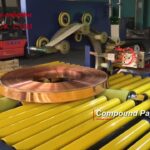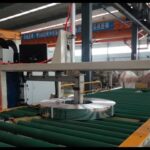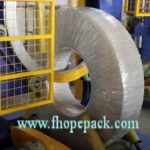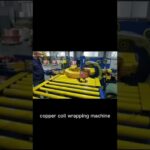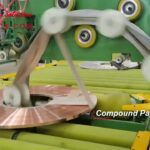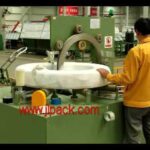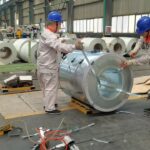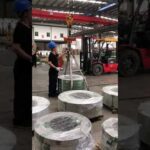Copper Coil Packaging: Preventing Tarnishing and Damage
Are your costly copper coils arriving dull and damaged? Tarnished copper means rejection, rework, and lost profits. When oxygen and corrosive gasses attack reactive non-ferrous metals during shipping and storage, the result is irreversible surface degradation. Effective copper coil packaging isn’t just a cost—it’s the critical shield preserving value, performance, and customer satisfaction against relentless environmental threats. Don’t let corrosion steal your bottom line.
Copper coils are highly susceptible to tarnishing and physical damage during storage and transit, requiring specialized packaging solutions beyond those used for steel. Effective copper coil packaging employs vapor corrosion inhibitors (VCI), acid-gas scavengers, and non-reactive physical barriers designed specifically for non-ferrous metals. These materials create a microenvironment that actively neutralizes corrosive agents, absorbs harmful gasses like hydrogen sulfide, and prevents mechanical impacts that initiate corrosion sites. Failure costs soar with rejected shipments.
Protecting copper demands a fundamentally different approach than protecting steel. Ignoring copper’s unique vulnerabilities leads to devastating losses and unrecoverable quality breaches. Understanding why copper corrodes and how specific packaging technologies counteract it is essential for risk mitigation. Let’s dissect the threats and the precise defenses needed to ensure your copper arrives pristine.
The Unique Vulnerability of Copper Coils to Corrosion
Is visible tarnish just the tip of a deeper, costlier problem? Copper corrodes not through rust, but through electrochemical reactions triggered by oxygen, moisture, acid gasses like H₂S and SO₂, chlorides, and even fingerprints. This contamination causes irreversible discoloration, surface pitting, and reduced electrical conductivity – defects your end-buyer will reject. Standard packaging used for steel coils accelerates copper degradation through galvanic reaction and chloride contamination. Protecting this valuable non-ferrous asset demands specialized defenses tailored to its unique chemistry.
Copper coil tarnishing is an electrochemical oxidation process accelerated by atmospheric pollutants (H₂S, SO₂), moisture, acidic residues, salts like chlorides, direct human contact (fingerprint acids), and contact with dissimilar metals or incompatible packaging materials like standard kraft paper. Effective packaging must actively neutralize acid gasses, block moisture ingress, prevent physical abrasion that breaches protective oxides, and eliminate contact corrosion pathways.
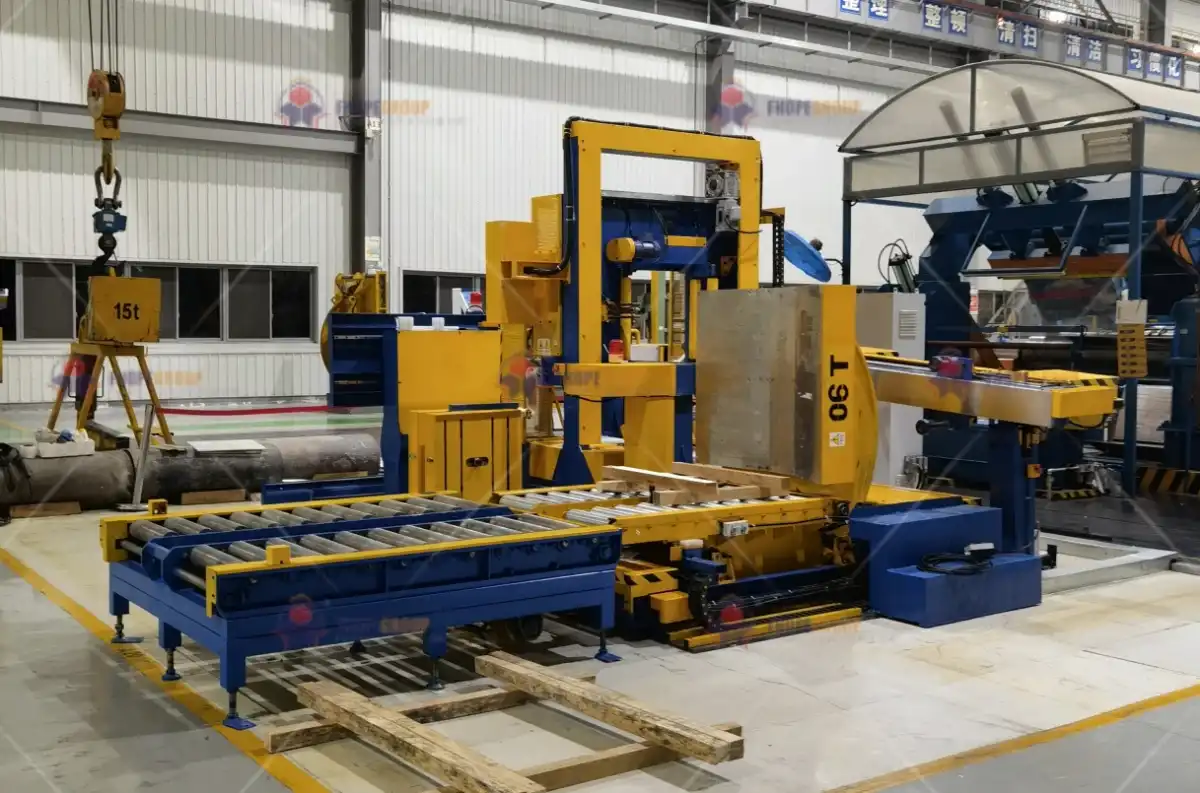
Beyond Rust: The Specific Corrosion Mechanisms Attacking Copper
Copper’s corrosion is a silent thief of value, operating through distinct pathways. Recognizing these specific mechanisms is the first step in deploying targeted packaging countermeasures:
- Tarnishing & Reactive Gas Attack: Copper readily reacts with sulfide gases like Hydrogen Sulfide (H₂S) prevalent in industrial and marine environments, forming dull black or brown copper sulfide on the surface. Chlorides and SO₂ also form greenish copper salts (verdigris).
- Water Staining & Pitting: Uneven wetting of copper surfaces causes streams of dissolved wash-off plating chemicals or salts to form unsightly streaks or localized deep pits. Moisture trapped under packaging dramatically worsens this.
- Galvanic/Contact Corrosion: Contact with dissimilar materials (e.g., carbon steel shims, standard non-VCI steel strapping, certain woods, non-compatible VCI papers intended for ferrous metals) creates electrical cells. Copper, often acting as the cathode, accelerates corrosion of the offending anodic material, whose corrosion products then stain and etch the copper surface.
- Ammonia Attack: Exposure to ammonia or amines (found in some industrial cleaners, solvents, and concrete) causes stress corrosion cracking in copper alloys under tension.
- Fingerprint Corrosion: Oils and salts from bare skin leave acidic residues that cause localized pitting under humid conditions.
- Abrasion & Impact: Physical damage scrapes off the thin protective oxide layer, exposing fresh metal to corrosive agents. Deformed coils are harder to protect effectively.
Critical Packaging Interaction Points:
| Interaction Point | Corrosion Risk | Packaging Solution Focus |
|---|---|---|
| Coil OD/ID Surface | Direct gas/moisture exposure, abrasion | Active gas scavenging, moisture barrier, non-abrasive physical protectors |
| Lateral Edges | Impact damage, edge corrosion initiation | Reinforced edge guards (cardboard, plastic), VCI coverage at edges |
| Coil End Faces | Water pooling, fingerprint contact | Absorbent/VCI interleaving layers, minimized handling |
| Strapping Contact | Galvanic reaction potential | Acid-gas scavenging/urethane jacketed strapping, correct VCI chemistry |
| Localized Water Trapping | Water staining, pitting | Desiccants, moisture barrier films/coatings, sealed packaging |
| Extended Storage (>6 Mo) | Potential VCI depletion | High-barrier film with high-concentration/long-life VCI and scavengers |
Using the wrong defense is worse than none at all. Acidic VCI formulations designed for ferrous metals can actually attack copper coils, highlighting the critical need for copper-specific protective chemistry and material compatibility tests. Avoiding incompatible materials like standard kraft paper and untreated wood packing is paramount to prevent copper degradation traceable back to the packaging itself.
Selecting the Right Anti-Tarnish Packaging Materials
Is generic VCI protection jeopardizing your copper coils? Many corrosion inhibitors designed for steel are completely ineffective or even detrimental to copper. Standard VCI films offer no defense against tarnishing from acid gasses, and traditional barrier papers can leach destructive chlorides and sulfides onto copper surfaces. Protecting this high-value metal requires uniquely formulated materials engineered specifically for non-ferrous defense – passive barriers are not enough; active neutralization is mandatory.
Effective copper coil packaging requires materials specifically engineered with nitrite-free VCI chemistries, acid-gas scavengers (often triazole derivatives and activated carbon components), neutral pH buffers, non-reactive physical barriers like poly-coated papers or pure polyethylene films, and impeccable compatibility testing. Universal or ferrous-targeted VCIs fail against copper tarnish.
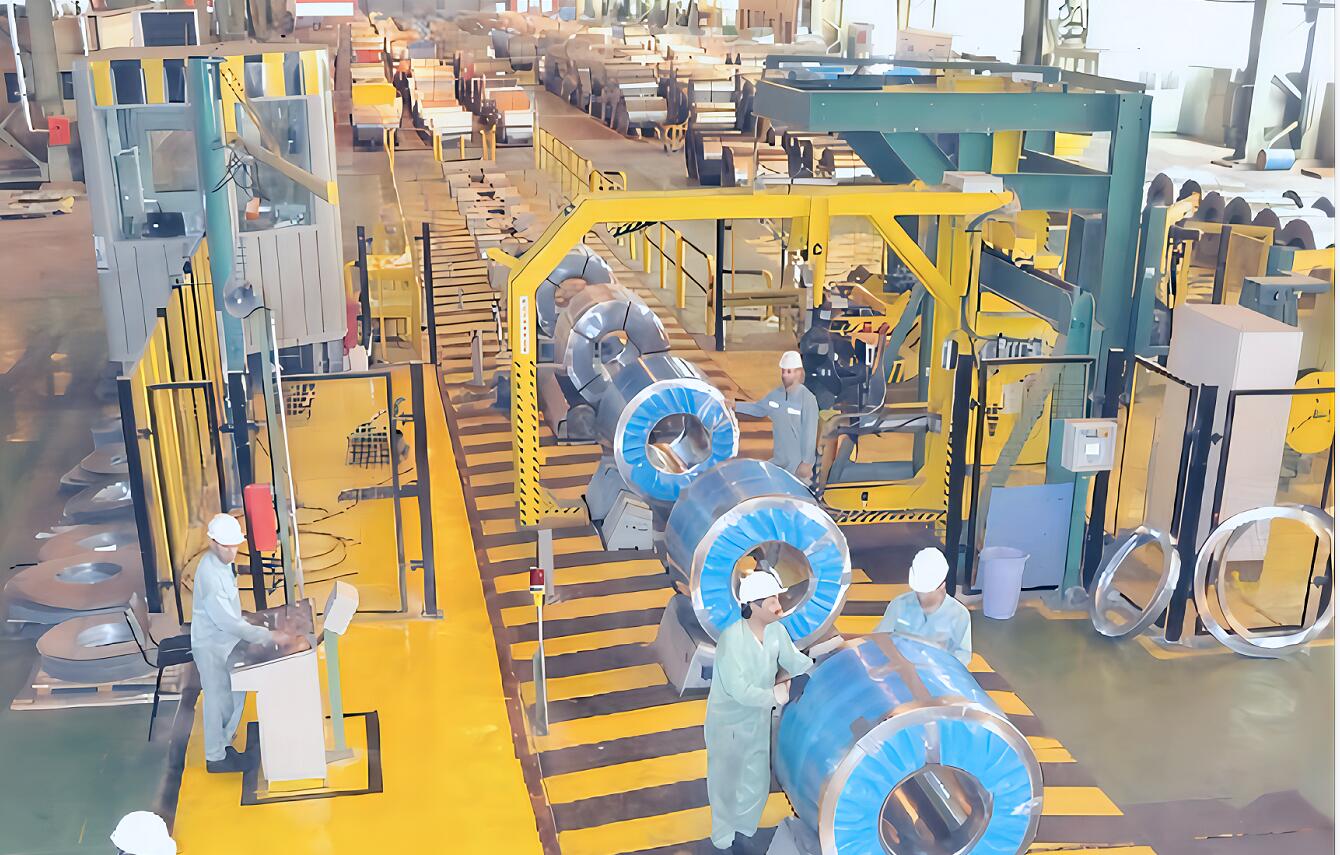
Copper-Specific Material Defense Arsenal
Stop wasting resources on ineffective solutions. Copper demands a specialized toolkit combining active chemistry with compatible physical barriers.
-
Core Technology 1: Anti-Tarnish VCI Papers & Films:
- Pure Copper Formulations: Nitrite-free VCIs incorporating organic triazoles (like benzotriazole – BTA or tolyltriazole – TTA) specifically chemisorb onto the copper surface, creating a hydrophobic protective monolayer impervious to moisture and sulfide gas penetration. Examples: Coppertex® expressly inhibits copper and brass alloys.
- Acid Gas Scavenging: Superior papers/films contain added components to chemically absorb and neutralize H₂S, SO₂, and organic acids, preventing them from reaching the metal surface. Examples: Silver Saver® or VCI Corrosorber Paper uses active scavenging coatings that change color when exhausted.
- High Barrier Polymer Films: Polyethylene (PE)-based films like VCI-126 TRF (heat resistant) or Copper-specific options (ICT®510-C Non-Ferrous Barrier Film) provide physical barriers against moisture and oxygen while releasing appropriate VCI chemistries. Must be metallocene-grade for low; no ferrous chemistry contamination.
- Copper Interleaving Papers: VCI-treated papers placed between coil wraps or layers prevent point contact corrosion and actively inhibit surfaces. Crucial for edge protection.
-
Core Technology 2: Protective External Packaging:
- Poly-Coated Scrim/Reinforced Papers: Provide excellent physical tear and puncture resistance over the coil OD/ID, while the food-grade poly coating prevents direct contact with potentially corrosive fibers and allows copper-VCI use. Examples: PC50H Scrim with appropriate VCI.
- Anti-Galvanic Strapping: Use only synthetic strapping (e.g., PET) or steel strapping fully insulated with a thick urethane jacket to prevent direct metal-to-copper contact. Standard ferrous strapping guarantees galvanic damage. Machine settings must eliminate high-pressure metal buckles digging in.
- Low-Od/Id Protectors: Corrugated cardboard or starboard protectors specifically sized for copper coils shield vulnerable edges from impacts. Pre-treat them with copper-compatible VCI powders if possible.
-
Core Technology 3: Auxiliary Protectors:
- Desiccant-VCI Pouches: Place Desicorr® VpCI multifunctional pouches (absorbing moisture plus emitting copper VCI) inside coil eyes and between wraps for enclosed space protection. Prevents condensation-induced staining.
- Copper VCI Powders/Foams: Daubrite Foam Pads or VpCI-150 Foam Tapes with copper inhibitors act as buffers inside coil eyes or enclosures.
Ignoring copper-specific formulations guarantees tarnish. Always verify supplier data showing proven copper protection per ASTM standards (e.g., D130, B111) and request MSDS to confirm no incompatible ferrous inhibitors or chlorides. Consumer-grade "anti-tarnish" materials like silver cloth lack the strength and heavy-duty barrier properties required for industrial coil environment demands. Copper-specific packaging costs marginally more upfront but prevents exponentially higher rejection costs later.
Implementing Optimal Copper Coil Packaging Processes
Are your carefully chosen copper packaging defenses sabotaged by flawed application? Improper handling, unclean surfaces, or inadequate sealing leaves copper coils exposed to the very tarnish sources the packaging should prevent. Even premium copper VCI films fail if coil surfaces are contaminated before wrapping or if packaging integrity isn’t hermetic. Preventing degradation requires process control as much as the right materials.
Effective copper coil packaging requires a meticulously controlled process: coils must be clean, dry, and handled with gloves; copper-specific VCI materials must be applied immediately around the entire surface without gaps; edges and inside diameters receive extra protection; strapping must avoid metal-copper contact; and the final package requires hermetic sealing to maintain the protective vapor phase environment.
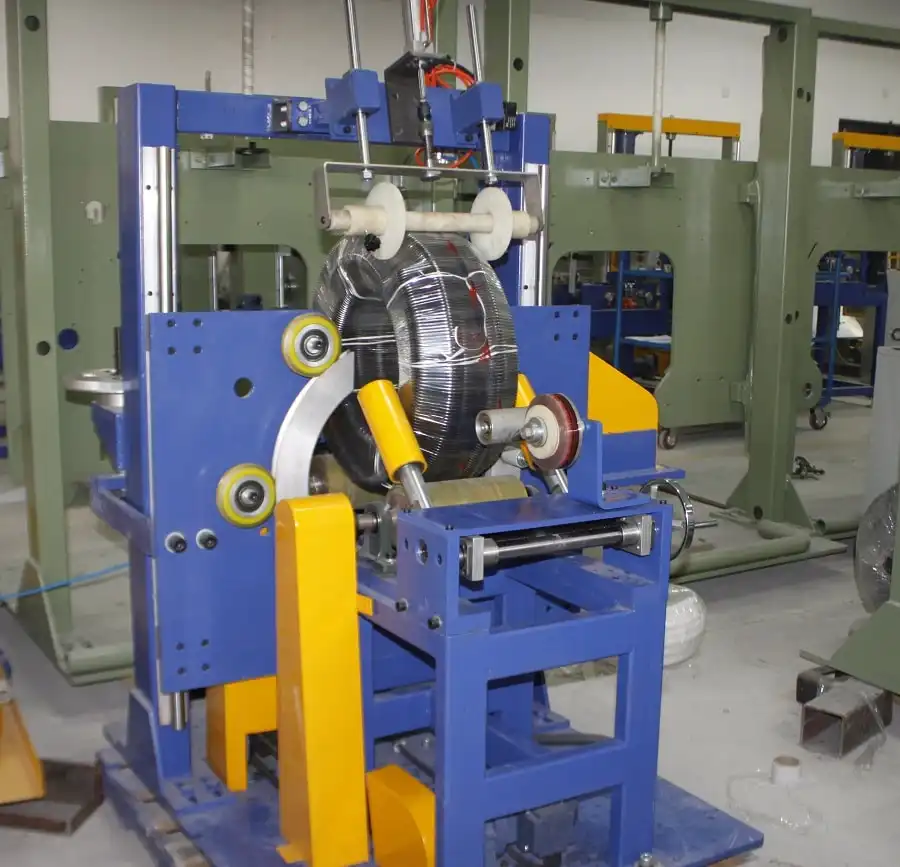
Step-by-Step Protocol for Maximum Copper Protection
Generic packaging procedures miss critical copper-specific steps. Implement this rigorous protocol consistently:
- Critical Pre-Cleaning & Drying: Remove all manufacturing oils, lubricants, fingerprints, and dust immediately after final inspection. Use only pure solvents specified as compatible with copper (VpCI-9800 is a suitable water-displacing cleaner/final rinse inhibitor). Ensure coils are completely dry (< 40% RH preferred) before application; trapped moisture is corrosion capital.
- Wear Clean Cotton or Nitrile Gloves: Bare hands deposit corrosive salts and oils. This step is non-negotiable throughout the entire process.
- Deploy Protective Barriers/Protectors:
- Apply thick, pre-cut corrugated cardboard to OD and ID surfaces. Pre-treat with copper VCI powder if possible. Alternatively, position OD/ID protectors. Ensure full, smooth coverage.
- Insert Cor-Pak Dunnage Bags or tightly wadded Copper VCI Paper inside the coil eye to fill the void, protecting the ID surface and acting as a VCI reservoir.
- Apply Anti-Tarnish Wrapping Interlayer: Wrap the entire coil circumference (over protectors) with acid gas scavenging VCI Paper like Coppertex® or Corrosorber Paper, overlapping substantially (minimum 2-3 inches). Seal seams with VCI-compatible tape. Ensure wrap extends fully over coil faces.
- Encase in Primary Barrier + VCI Film:
- Using Copper-specific VCI film (like ICT®510-C Non-Ferrous), wrap the coil tightly. Automated wrapping machines with pre-set tension provide superior, consistent containment over manual wraps.
- Critical areas: Ensure at least 4 overlapping layers at the outer edges/faces for maximum physical barrier and VCI concentration. Seal seams completely (<1% leakage rate is target).
- Alternatively, consider heat-sealed bottom/top VCI lids creating a sealed cavity.
- Install Secondary Moisture/Acid Arrestors: Place Desicorr® VpCI pouches directly onto coil faces and near edges under the final barrier film, preferably secured with non-contaminating tape. They absorb any residual moisture migrating towards the coil.
- Strapping with Non-Galvanic Contact:
- Only use plastic strapping (PET preferred) OR steel strapping with a full urethane jacket over the entire strap surface (preventing any bare metal contact with the coil’s film or protector).
- Position straps carefully avoiding crushing the underlying coil steel core eye or heatsinks. Maintain tension below levels that deform coil shapes or puncture films.
- Final Verification & Sealing:
- Inspect film for punctures, gaps, or weak seals. Repair immediately using VCI tape patching only.
- Place in a covered storage area away from direct contact with concrete floors (use dunnage) and aggressive ambient air (H₂S sources like idling trucks).
- Label packages clearly with protective life expiration dates if applicable.
Failure anywhere in this chain creates a point of attack. Regularly measure package integrity seal rates and perform pull tests on patched areas. Simulate worst-case transit/storage conditions on sample packaged coils for at least 30 days testing VCI effectiveness before full deployment.
Copper Coil Long Term Storage & Export Strategies
For copper coils requiring long-term storage (> 6 months) or facing aggressive export conditions (marine air, humidity cycles, temperature extremes), specialized strategies are essential: utilize rigid VCI film barrier systems (like foil laminates CorrLam LD VpCI Barrier Laminate) to completely isolate the coil, combine copper VCI Films with embed targetted desiccant/VCI pouches, elevate coils on dunnage with sealed bottom covers under the VCI barrier, and implement double-layered packaging with external weather shields. Exporting or warehousing copper coils introduces amplified tarnish threats, demanding next-level protection beyond standard domestic measures. Moisture ingress over time depletes standard VCI levels, marine salt aerosols penetrate micro-pores, and temperature cycling induces catastrophic condensation. Combat this with sealed barrier laminate films that lock VCI vapor inside while resisting extreme environmental assault. Rigid sealed VCI enclosures, meticulously purged of moisture before closure, form vaults against corrosion. Place coils on wooden pallets sealed underneath by heavy VCI barrier sheets acting as moisture vapor lift-suppressants. Adding sacrificial VCI emitters inside the sealed space guarantees inhibited atmosphere longevity. For containers, externally wrap sealed units in heavy-duty tarpaulins like CorSheild®, mitigating solar gain condensation risks. Consistent temperature control in storage remains paramount – rapid fluctuations overwhelm any packaging through condensation, rendering even advanced designs vulnerable. Copper coil protection for long-haul export means anticipating and defeating multiple generations’ worth of corrosive attack simultaneously.
Conclusion
Successful Copper Coil Packaging demands recognition that copper is fundamentally different from ferrous metals. Material selection must target acid-gas scavenging and non-ferrous specific inhibitor action. Process integrity requires eliminating moisture and contamination at packaging onset, maximizing physical encapsulation, and preventing all galvanic pathways. Investing in proper techniques shields your investment, ensuring pristine delivery even after harsh journeys. Excellence in packaging execution preserves copper’s valuable properties and your operational integrity.
